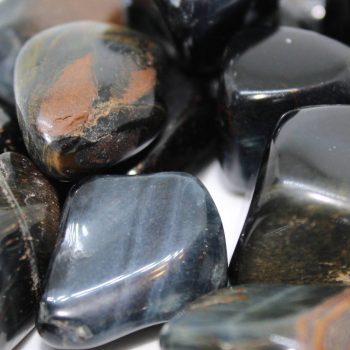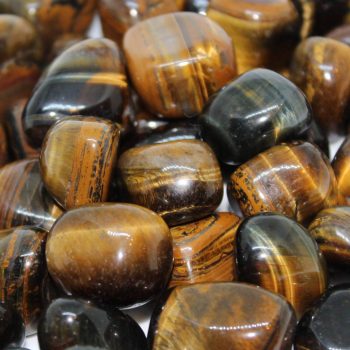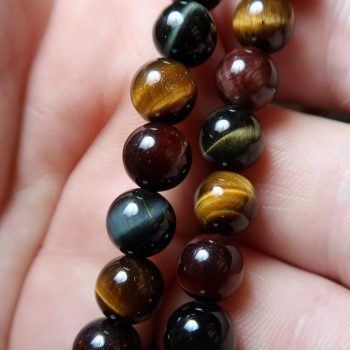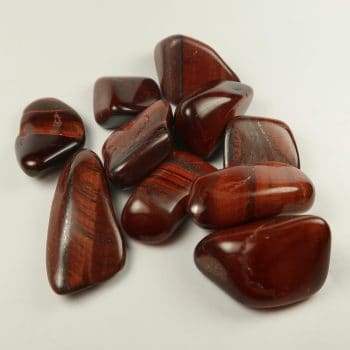Tigers Eye
We sell a range of colours of Tigers Eye, including the Blue, Golden, and Red varieties.
Tigers Eye is a chatoyant gemstone often used as a decorative object – given its colour by varying levels of Iron content, interspersed with tiny Quartz crystals.
Tiger’s eye is found in several places, including South Africa, Australia, Brazil, India, and the United States.
Information about Tigers Eye
Tiger’s eye is a chatoyant variety of quartz known for its silky luster and golden to brownish hues, which create a striking optical effect resembling the eye of a tiger.
This phenomenon, called chatoyancy, results from the parallel alignment of fibrous inclusions, often replaced by silica during the mineral’s formation. The stone typically forms in elongated, banded patterns that enhance its visual appeal, especially when polished.
Tiger’s eye is commonly cut into cabochons or beads to showcase its shimmering, dynamic texture. It is primarily found in metamorphic rocks and is associated with iron-rich minerals.
Uses and History
Tiger’s eye is primarily used as a gemstone in jewellery, including rings, bracelets, necklaces, and pendants. Its distinctive appearance also makes it popular for carving ornamental objects and decorative pieces.
Tigers Eye is not recognised as a mineral species in its own right, but a trade name for this intergrown form of quartz.
It is sometimes dyed, especially blue and red – and often heated, too. The colour changes quite readily.
Mineralogy
Most commonly a golden yellow/brown, but blue and red variations both exist.
Hazards and Warnings
Can be confused with various asbestos minerals including chrysotile.
Tigers Eye is safe to handle, but any unidentified or unconfirmed chatoyant material with loose fibres should be considered with suspicion.
Mineral collectors should wash their hands after handling specimens, to avoid any exposure to potential toxins.
Almost all rocks, minerals (and, frankly, almost all other substances on earth) can produce toxic dust when cutting, which can cause serious respiratory conditions including silicosis.
When cutting or polishing rocks, minerals, shells, etc, all work should be done wet to minimise the dust, and a suitable respirator or extraction system should be used.
Translations
Arabic:
- عين النمر
Hindi:
Portuguese:
- Olho de tigre
Bengali:
Indonesian:
Punjabi:
English:
- tigers eye
Italian:
- Occhio di tigre
Russian:
- Тигровый глаз
French:
- Oeil-de-tigre
Japanese:
- タイガーズアイ
Spanish:
- Ojo de tigre
German:
- Tigerauge
Korean:
- 호안석
Thai:
- หินตาเสือ
Gujurati:
Mandarin Chinese:
- 虎眼石
Urdu:




